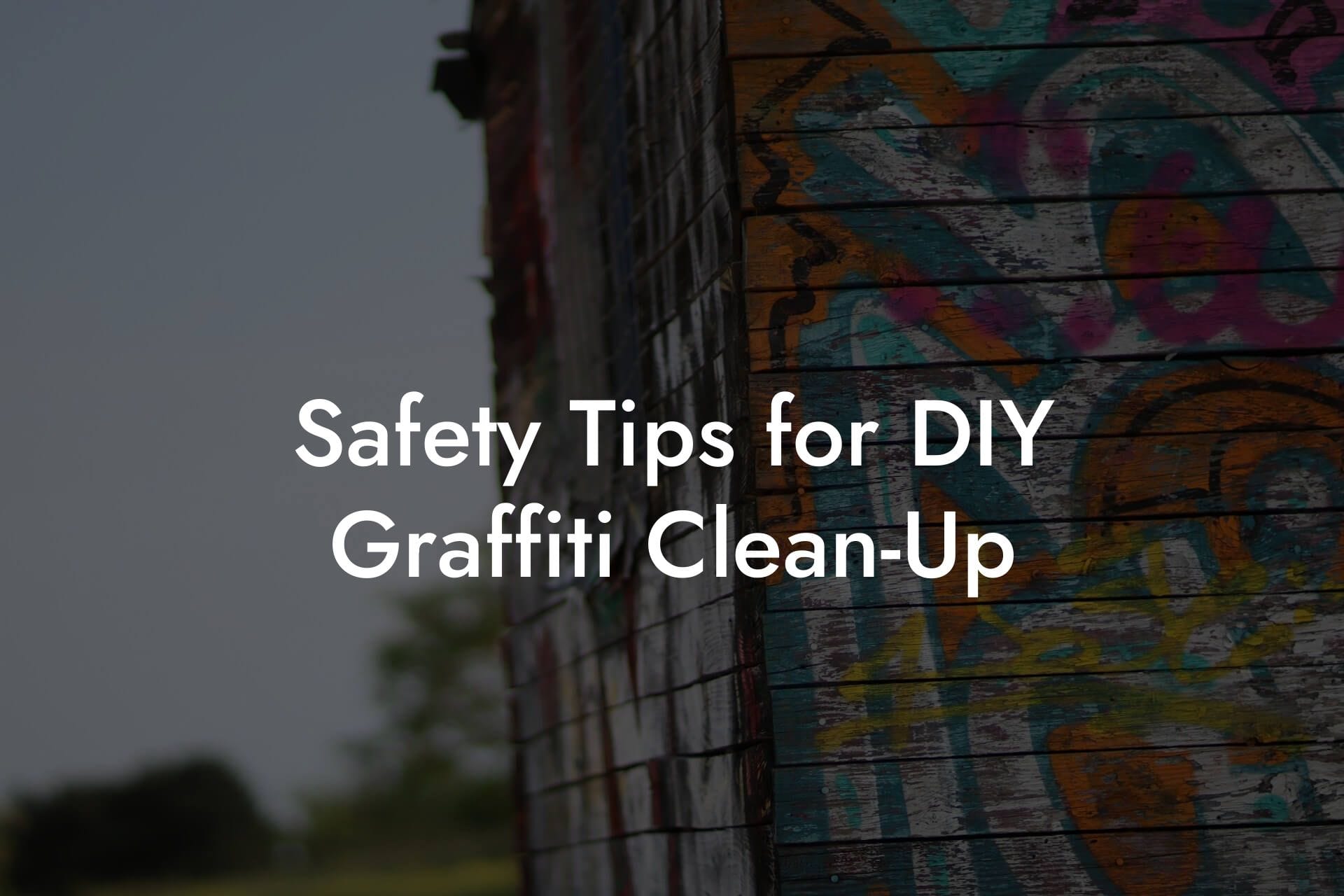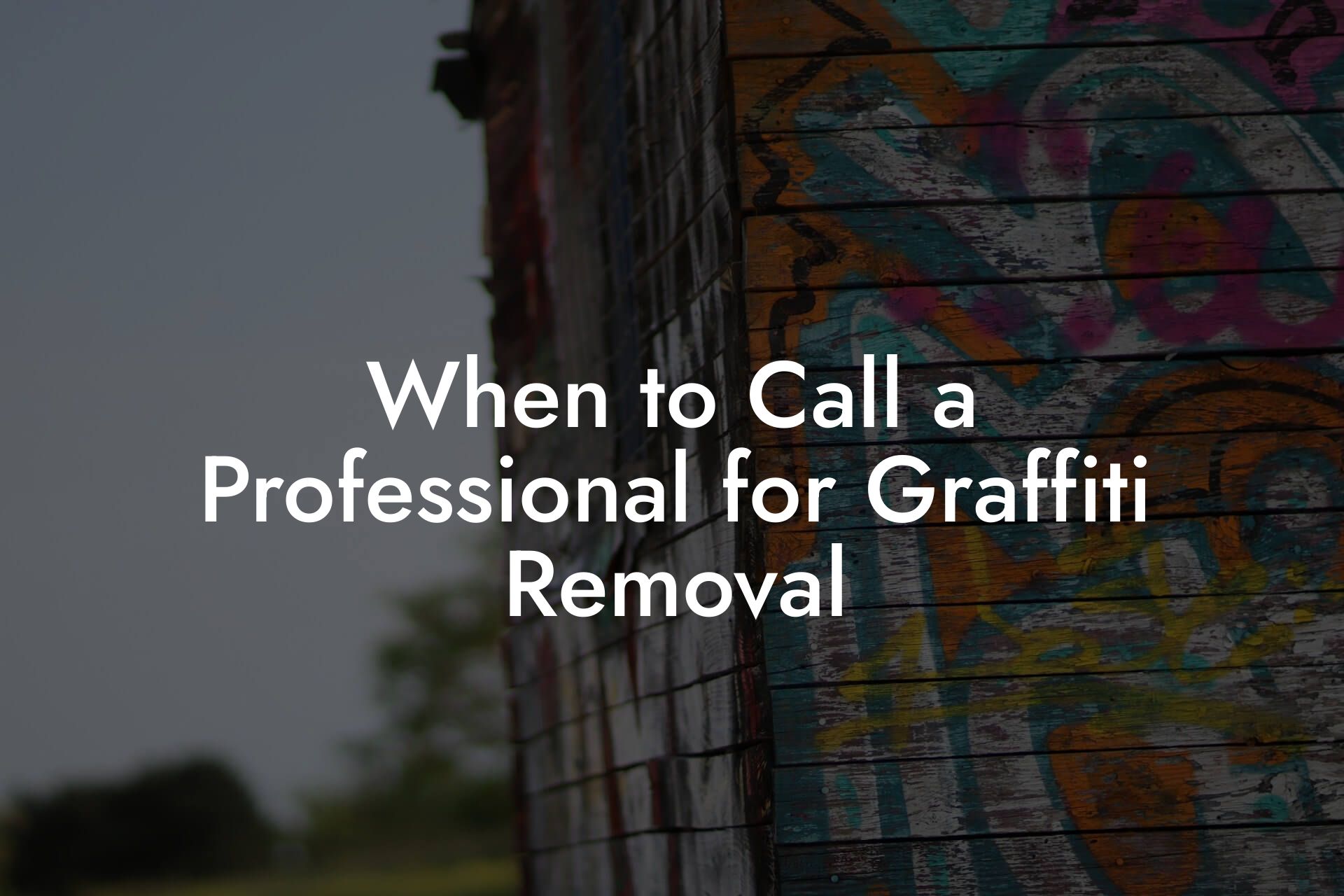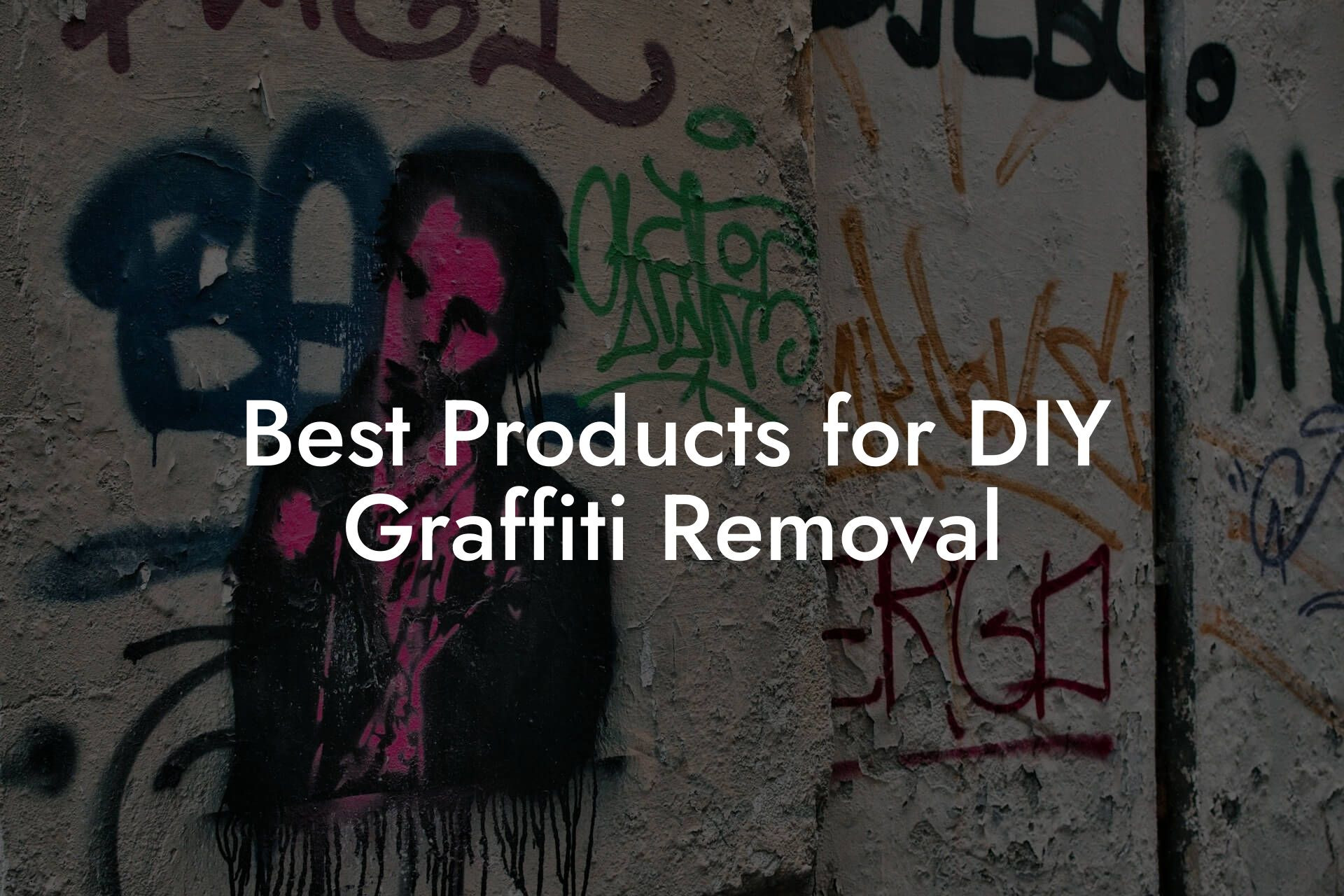As a homeowner or business owner in London, dealing with graffiti vandalism can be frustrating and overwhelming. At Graffiti Removal London, we understand the importance of restoring your property to its original state. In this comprehensive guide, we will walk you through the step-by-step process of removing graffiti at home, providing you with the necessary knowledge and tools to tackle this unwanted problem.
Table of Contents
Assessing the Graffiti Damage
Before starting the removal process, it's essential to assess the extent of the graffiti damage. Take a closer look at the affected area and note the following:
- Type of surface: Is it a wall, fence, or other material?
- Type of graffiti: Is it spray paint, marker, or another type of material?
- Size and location: How large is the graffiti, and is it in a hard-to-reach area?
- Age of the graffiti: Has it been on the surface for a short or extended period?
Understanding these factors will help you determine the best approach for removal.
Gathering Essential Supplies
To remove graffiti effectively, you'll need the right supplies. Make sure you have the following:
- Graffiti removal solution or paint thinner
- Soft-bristled brush or scrubber
- Lint-free cloth or paper towels
- Protective gloves and eyewear
- A ladder or step stool (if necessary)
- Soap and warm water (for cleaning the surface after removal)
Removing Graffiti from Different Surfaces
The removal process varies depending on the surface type. Here are some specific tips for common surfaces:
- Brick and concrete: Use a graffiti removal solution or paint thinner, and apply it to the affected area using a soft-bristled brush. Let it sit for 10-15 minutes before scrubbing gently with a lint-free cloth or paper towels. Rinse with soap and warm water.
- Metal: Use a metal-specific graffiti removal solution or a mixture of baking soda and water to create a paste. Apply the paste to the affected area and let it sit for 10-15 minutes. Scrub gently with a soft-bristled brush and rinse with soap and warm water.
- Wood: Use a wood-specific graffiti removal solution or a mixture of olive oil and baking soda to create a paste. Apply the paste to the affected area and let it sit for 10-15 minutes. Scrub gently with a soft-bristled brush and rinse with soap and warm water.
- Glass: Use a glass-specific graffiti removal solution or a mixture of white vinegar and water. Apply the solution to the affected area and wipe clean with a lint-free cloth or paper towels.
Tips for Removing Graffiti from Delicate Surfaces
When dealing with delicate surfaces, it's essential to exercise caution to avoid damage. Here are some additional tips:
- Test a small, inconspicuous area first to ensure the removal solution or method won't damage the surface.
- Avoid using harsh chemicals or abrasive materials that can scratch or discolor the surface.
- Use a gentle touch and avoid applying too much pressure, which can cause damage or scratching.
Preventing Future Graffiti
Removing graffiti is only half the battle. To prevent future occurrences, consider the following:
- Install security cameras to deter vandals and aid in identification.
- Improve lighting in the area to make it less appealing to vandals.
- Apply a graffiti-resistant coating to the surface.
- Increase foot traffic in the area through community events or increased police presence.
When to Seek Professional Help
While this guide provides a comprehensive approach to removing graffiti at home, there may be situations where professional help is necessary. Consider seeking assistance from a graffiti removal expert like Graffiti Removal London if:
- The graffiti is extensive or in a hard-to-reach area.
- You're unsure about the best removal method for the surface type.
- You don't have the necessary supplies or equipment.
- You're short on time or prefer a hassle-free solution.
Removing graffiti at home requires patience, persistence, and the right techniques. By following this step-by-step guide, you'll be well-equipped to tackle unwanted graffiti and restore your property to its original state. Remember to always exercise caution, test surfaces before applying removal solutions, and consider seeking professional help when necessary. At Graffiti Removal London, we're dedicated to providing expert graffiti removal services to businesses and homeowners in London. Contact us today to learn more about our services and let us help you reclaim your property from graffiti vandalism.
Frequently Asked Questions
What is the best way to remove graffiti?
Removing graffiti requires the right techniques and materials. The best approach is to identify the type of surface the graffiti is on and choose a suitable removal method. For example, on porous surfaces like brick or concrete, a gentle cleaning solution and a soft-bristled brush may be effective. On non-porous surfaces like metal or glass, a solvent-based cleaner may be needed. It's also important to act quickly, as the longer the graffiti remains, the harder it is to remove.
Can I use household cleaners to remove graffiti?
While it may be tempting to use household cleaners like bleach or nail polish remover to remove graffiti, this is not recommended. These products can damage surfaces, discolor paint, or leave behind residues that can attract dirt and dust. Instead, use specialized graffiti removal products that are designed for the specific surface type.
How do I remove graffiti from a painted wall?
Removing graffiti from a painted wall requires care to avoid damaging the underlying paint. Start by cleaning the area with a mild detergent and water. If the graffiti is still visible, use a gentle graffiti removal product specifically designed for painted surfaces. Apply the product according to the instructions and test it on a small, inconspicuous area first.
What if the graffiti is on a sensitive surface?
If the graffiti is on a sensitive surface like wood, fabric, or historic stonework, it's best to seek the advice of a professional graffiti removal service like Graffiti Removal London. We have the expertise and specialized equipment to remove graffiti without damaging the surface.
Can I use high-pressure washes to remove graffiti?
High-pressure washes can be effective for removing graffiti from certain surfaces, but they can also cause damage, especially on porous or delicate surfaces. It's essential to use the right pressure and distance to avoid damaging the surface. If you're unsure, it's best to consult a professional graffiti removal service.
How do I prevent graffiti from happening in the first place?
Preventing graffiti requires a combination of deterrents and community engagement. Consider installing security cameras, improving lighting, and increasing foot traffic in the area. You can also engage with local community groups and schools to educate them about the impact of graffiti. Finally, consider applying a graffiti-resistant coating to surfaces.
What is the best way to remove graffiti from metal?
Removing graffiti from metal requires a solvent-based cleaner specifically designed for metal surfaces. Apply the cleaner according to the instructions and use a soft-bristled brush to gently scrub the area. Avoid using abrasive materials or harsh chemicals that can damage the metal.
Can I remove graffiti myself or should I hire a professional?
While it's possible to remove graffiti yourself, hiring a professional graffiti removal service like Graffiti Removal London can be the most effective and efficient option. We have the expertise, equipment, and experience to remove graffiti quickly and safely, minimizing the risk of damage to the surface.
How long does it take to remove graffiti?
The time it takes to remove graffiti depends on the size of the area, the type of surface, and the complexity of the removal process. On average, a professional graffiti removal service like Graffiti Removal London can remove graffiti within a few hours to a few days.
Is graffiti removal expensive?
The cost of graffiti removal varies depending on the size of the area, the type of surface, and the complexity of the removal process. At Graffiti Removal London, we offer competitive pricing and a free quote service to help you budget for the removal process.
What if the graffiti is on a historic building?
Removing graffiti from historic buildings requires specialized care and attention. At Graffiti Removal London, we have experience working with historic buildings and use gentle, non-abrasive methods to remove graffiti without damaging the surface.
Can I remove graffiti from glass?
Removing graffiti from glass requires a gentle touch to avoid scratching the surface. Use a solvent-based cleaner specifically designed for glass surfaces and apply it according to the instructions. Avoid using abrasive materials or harsh chemicals that can damage the glass.
What if the graffiti is on a large area?
Removing graffiti from a large area requires a systematic approach and the right equipment. At Graffiti Removal London, we have the expertise and equipment to remove graffiti from large areas quickly and efficiently.
Can I use baking soda and water to remove graffiti?
While baking soda and water can be effective for removing graffiti from certain surfaces, it's not a recommended method for all surfaces. Baking soda can be abrasive and damage certain surfaces, so it's best to use a gentle, specialized graffiti removal product instead.
How do I remove graffiti from concrete?
Removing graffiti from concrete requires a gentle cleaning solution and a soft-bristled brush. Apply the cleaning solution according to the instructions and scrub the area gently. Avoid using harsh chemicals or abrasive materials that can damage the concrete.
What if the graffiti is on a surface that's exposed to the elements?
Removing graffiti from surfaces exposed to the elements requires specialized care and attention. At Graffiti Removal London, we use gentle, non-abrasive methods and specialized products to remove graffiti from surfaces like bridges, tunnels, and outdoor murals.
Can I remove graffiti from wood?
Removing graffiti from wood requires a gentle touch to avoid damaging the surface. Use a solvent-based cleaner specifically designed for wood surfaces and apply it according to the instructions. Avoid using abrasive materials or harsh chemicals that can damage the wood.
How do I remove graffiti from plastic?
Removing graffiti from plastic requires a gentle cleaning solution and a soft-bristled brush. Apply the cleaning solution according to the instructions and scrub the area gently. Avoid using harsh chemicals or abrasive materials that can damage the plastic.
What if the graffiti is on a surface that's difficult to access?
Removing graffiti from surfaces that are difficult to access requires specialized equipment and expertise. At Graffiti Removal London, we have the necessary equipment and experience to remove graffiti from hard-to-reach areas like rooftops, bridges, and tunnels.
Can I remove graffiti from fabric?
Removing graffiti from fabric requires a gentle touch to avoid damaging the material. Use a solvent-based cleaner specifically designed for fabric surfaces and apply it according to the instructions. Avoid using abrasive materials or harsh chemicals that can damage the fabric.
How do I remove graffiti from stone?
Removing graffiti from stone requires a gentle cleaning solution and a soft-bristled brush. Apply the cleaning solution according to the instructions and scrub the area gently. Avoid using harsh chemicals or abrasive materials that can damage the stone.
What if the graffiti is on a surface that's sensitive to chemicals?
Removing graffiti from surfaces sensitive to chemicals requires specialized care and attention. At Graffiti Removal London, we use gentle, non-abrasive methods and specialized products to remove graffiti from surfaces like artwork, antiques, and sensitive equipment.
Can I remove graffiti from ceramics?
Removing graffiti from ceramics requires a gentle cleaning solution and a soft-bristled brush. Apply the cleaning solution according to the instructions and scrub the area gently. Avoid using harsh chemicals or abrasive materials that can damage the ceramic.
How do I remove graffiti from brick?
Removing graffiti from brick requires a gentle cleaning solution and a soft-bristled brush. Apply the cleaning solution according to the instructions and scrub the area gently. Avoid using harsh chemicals or abrasive materials that can damage the brick.
What if I'm not sure what type of surface the graffiti is on?
If you're unsure what type of surface the graffiti is on, it's best to consult a professional graffiti removal service like Graffiti Removal London. We can identify the surface type and recommend the best removal method to ensure the graffiti is removed safely and effectively.
Toby Doherty
Toby Doherty is a seasoned graffiti removal expert with over 20 years of experience in the industry. Throughout his career, Toby has helped countless businesses and property owners in London maintain clean, graffiti-free spaces. His extensive knowledge of graffiti removal techniques, from eco-friendly solutions to advanced technologies like laser cleaning, makes him a trusted authority in the field. Passionate about restoring urban environments, Toby combines his hands-on expertise with a commitment to staying up-to-date on the latest industry trends and innovations. When he’s not out in the field, Toby shares his insights through detailed articles, offering practical advice on everything from graffiti prevention to legal considerations.




